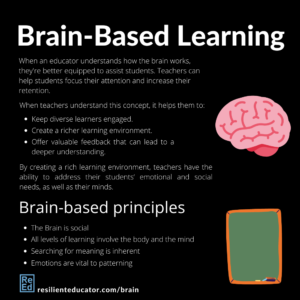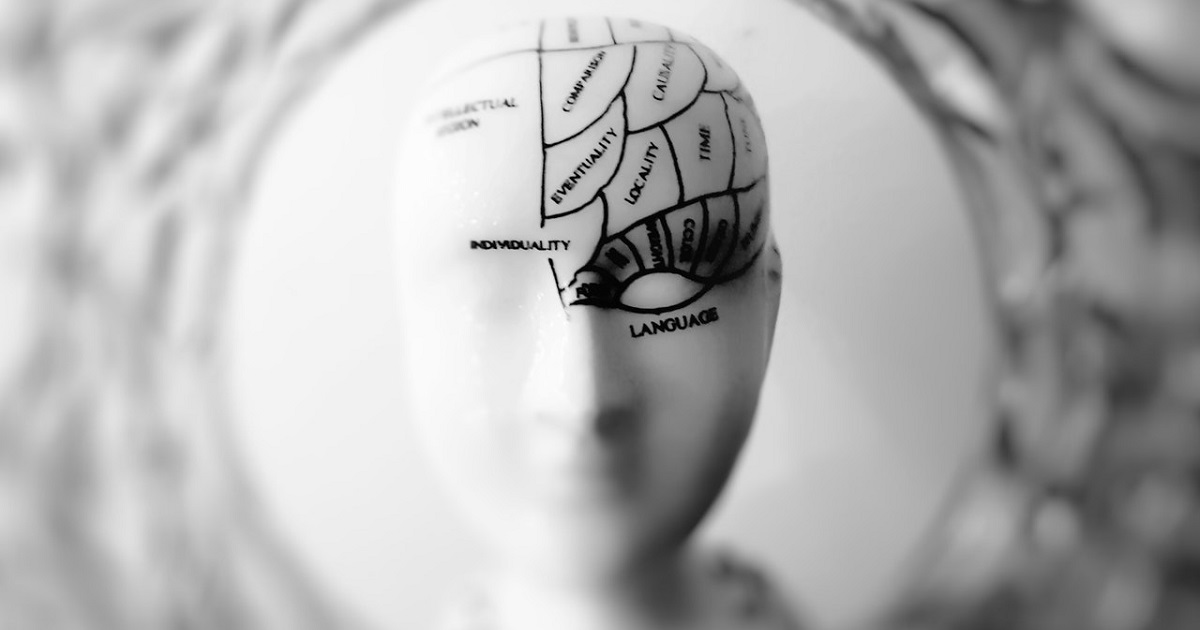

When an educator understands how the brain works, she is better equipped to assist his students in several ways. She can help students focus their attention, which will increase their retention.
There is a lot that science does not understand about the learning process, and specifically, brain based learning theories. Every person born is able to learn at some level. Babies develop an understanding that crying gets them something, for example. They use it as a tool to garner attention and food. The phrase brain-based learning sounds redundant because every style of education involves the brain. While that is true, not all teaching incorporates brain functioning into the learning process. To understand the difference, you must know more about how brain-based teaching works.
This learning method draws insights from several fields, including:
- Psychology
- Technology
- Neurology
When teachers understand this concept, it helps them to:
- Keep diverse learners engaged.
- Create a richer learning environment.
- Offer valuable feedback that can lead to a deeper understanding.
Most educational formats focus on conditioning or memory stimulation. Put simply, a teacher creates a stimulus to either invoke a response or develop a memory. When a student sits and listens to a lecture, a memory becomes etched into the mind. Reading text and taking notes further enhances that memory. The more times a person hears or sees something, the deeper the memory becomes. This is the basis for cognitivism.
Conditioning invokes a specific physical response to stimuli. A student learns to drive a car through practice. They get into the car, insert the key and turn it. The reward is the car starts. When they do this enough times, it becomes a habit. The driver automatically knows by turning the key, the car will start.
However, promoters of brain-based learning believe that cognitivism and conditioning interfere with what the brain is trying to do naturally and make learning more difficult.
By creating a rich learning environment, teachers have the ability to address their students’ emotional and social needs, as well as their minds.
6 actionable tips for brain-based learning
- Teachers must make use of the classroom space to arouse all senses. For example, build a rainforest simulation in the classroom while studying the environment of Central America. By placing stuffed animals around the forest, children automatically associate certain species with this theme. Students can go on safari during a class to learn more about the rainforest.
- Brain-based learning helps students relax in order to improve alertness. Make a safe learning environment. School is a challenging environment that often produces a stress response that can interfere with learning. Play music, introduce soft scents, and dim the lighting to promote a stress free learning arena.
- Stimulate social skills to improve the experience. People retain better understanding of a concept when they utilize their social skills. Set up work groups around the room for discussion. The seating should be comfortable with soft chairs and even couches. The bulletin boards and wall decorations in this area should reflect the topic for total immersion. If learning about the rainforest, place cardboard trees and vines on the walls. Play the sound of rain falling in the background to add to the lesson.
- Make study challenging. The more complex and hands-on a teaching assignment is, the better the cognitive stimulation.
- Teachers need to introduce art and music into lessons. Artistic endeavors trigger images in the brain that reinforce complex ideas. If teaching students about the light bulb, drawing the individual components and labeling them helps instill the basic design. The use of color adds to the images. One bulb with a cool filament drawn in blue next to a bulb with a red-hot filament tells a story.
- Set up a learning folder for each child. Maintaining past work assignments provides tools for reflection. This is where kids store artwork, past tests and other elements of the learning process. They can look through the folders to self-assess their progress on a subject by comparing quizzes to see the improvement.
Many teachers already use some brain-based learning
- Activating prior knowledge: When a teacher introduces topics to his students by activating prior knowledge, he or she is helping them build on what they already know. This strengthens the connections in their brains.
- Utilizing tools: Teachers who use rhymes, songs and graphic organizers are already using strategies related to brain-based learning. These strategies assist students to represent their thinking kinesthetically, visually and phonetically. These techniques prime the brain for learning.
Brain-based education is about eliminating barriers and allowing the mind to work without distractions. Learning is not a foreign concept – it comes naturally. Studies show that a traditional lecture environment is less effective than immersion in a subject. The goal is to make the lesson memorable so the factual elements stick as well.
Brain-based principles, and how to implement them
Brain-based learning is considered a comprehensive approach to instruction. Brain-based education offers a biologically driven classroom structure that corresponds to the functions of the human brain at different developmental levels. The practice engages the entire body to enhance the learning process.
The basic theory behind brain-based learning is total body immersion in a topic. There are tips and tricks teachers can use to help promote natural learning.
The Brain is social
Human beings are naturally social and seek contact with others. Some of the drive to be social is the desire to learn through imitation and respond to the behaviors that are seen. Individuals find meaning in the experiences and information obtained when in contact with others.
Educators have the ability to harness this drive by preparing activities that allow students to speak with one another and discuss what they are learning. By allowing this kind of activity, ideas are explored together and:
- Modified
- Transformed
- Confirmed
- Rejected
All levels of learning involve the body and the mind
Whenever an individual acquires new information or has a meaningful experience, the brain will undergo a physiological change. This process is referred to as neural plasticity.
This physiological change includes small strands (dendrites) to sprout and over time, groups of these strands combine to create stronger structures that are called synapses.
The synapses are similar to traffic junctions allowing various information highways to intersect. Some experts state that when an individual learns something new, he is laying down a neural pathway.
When a particular learning pattern or experience is repeated, the neural pathway becomes even stronger. This shows that learning has physical, as well as mental impact on the brain.
Students learn better if they are given the opportunity to combine mental and physical activity together. Students become bored when they just sit all day. All a teacher needs to do is make his learning activities more active.
Although practice does not necessarily make perfect, it does allow students to firmly establish the information.
Searching for meaning is inherent
Human beings make sense of what they experience. So they organize their information and experiences in ways that are understood.
Interest is a huge factor in the way that an individual will filter the enormous amount of information that he is given. If an individual is interested in something, he feels the need to understand it.
Students are not always enthusiastic about the subjects they are being taught; however, there are ways that teachers can stimulate their students. By doing this, the innate desire to find meaning in what is going on will kick in and their learning experience will be more beneficial.
Emotions are vital to patterning
Neutral learning does not exist. Whenever an individual learns something, there is always an emotional response. This means that every decision has some kind of emotion linked to it.
This is considered one of the strongest implications of brain-based learning. This means that the classroom is actually an emotional place.
Teachers need to encourage students to have positive attitudes. When teachers treat their students with respect, it builds a desirable environment that tends to help their students succeed.
Teachers need to utilize materials that draw their students into learning because it is presented to them in an attractive and inviting way. Deep truths will be uncovered as the investigation into the child’s brain continues.
Categorized as: Tips for Teachers and Classroom Resources
Tagged as: Engaging Activities, Leadership and Administration
